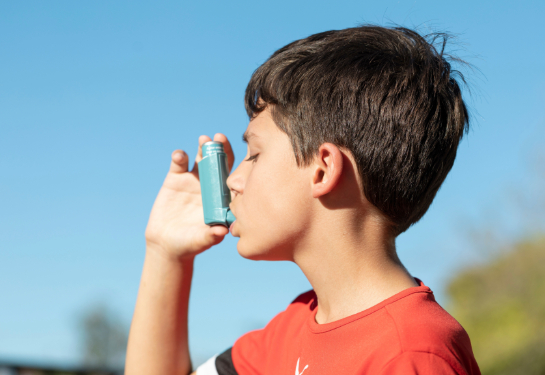How to manage an asthma attack: Tips to breathe easy
Asthma is a chronic respiratory condition that affects millions of individuals worldwide. According to the American Lung Association, over 26 million people in America are living with this condition.

To raise awareness, UC Davis Health pulmonologist Samuel Louie shared tips on how people with asthma can better manage their attacks.
What are the signs and symptoms that someone has asthma?
The signs and symptoms of asthma can force a person to live with limitations – they include daily occurrences of coughing, wheezing, shortness of breath or breathlessness (dyspnea) with exertion.
What happens during an asthma attack?
Asthma attacks are called exacerbations in textbooks. During these attacks, there is an escalation of inflammation that leads to more airway wheezing (from airway smooth muscle bronchoconstriction) and mucus plugging. Breathing that is normally effortless becomes a major task.
Sometimes the work of breathing can cause patients to experience respiratory distress. Shortness of breath at rest can progress to acute respiratory failure where the lungs are no longer able to remove carbon dioxide from the body and deliver fresh oxygen into the blood. This is called hypoxemia and can lead to fatal asthma or suffocation which takes the lives of 11 people each day in the United States.
What should you do if you think you have asthma?
If you think you may have asthma, seek education and treatment from a health care professional who will help ascertain if asthma is the most likely and correct diagnosis. There is no conclusive test for asthma.
Approximately one-third of people diagnosed with asthma do not have asthma! It is a clinical diagnosis in most cases and does not need a lung biopsy. Classic asthma symptoms should have a good response to albuterol with relief of symptoms within one to five minutes.
What is the best way to manage your asthma?
You should aim for control of asthma symptoms with an individually designed, long-term asthma treatment plan to minimize symptoms or eliminate them altogether and to reduce the risk of acute asthma attacks or exacerbations. It is the best and safest way to begin managing asthma with the avoidance of known triggers.
Inhaled corticosteroids and not oral corticosteroids are the most effective first-line drug therapy that can establish asthma control within days to weeks. Other drugs called long-acting bronchodilators can be added to inhaled corticosteroids.
Controlled asthma can be confirmed with an Asthma Control Test (ACT) administered during a clinic appointment. A score of at least 20 out of a possible total score of 25 is considered controlled asthma.
One of the goals in visiting your health care provider is to learn how to recognize symptoms and prevent them from worsening with an asthma action plan. Self-management and patient safety are the goals of patient education and patient training.
Remember: Asthma control is a marathon, not a sprint!
What are some asthma triggers?
Asthma triggers include air pollution, smoke, dust and dust mites, molds, allergens like pollen, air pollution, viral infections and bacterial infections.
How can someone avoid common asthma triggers?
Good personal hygiene (hand washing, no nose picking) and appropriate vaccinations for respiratory viruses help avoid asthma triggers.
Also, washing and grooming pets reduces pet dander. Pillowcases and frequent washing of linens can reduce exposure to dust mites.
What should you do if you are having an asthma attack?
Never underestimate the danger from an asthma attack. A person with mild persistent asthma can have as many asthma attacks as those with moderate to severe persistent asthma. You should always have on hand a rescue inhaler that delivers a specific corticosteroid budesonide in combination with albuterol for people 17 years and older.
If the patient is not better after two hours, go to the local emergency department for evaluation and treatment, or call 911.




